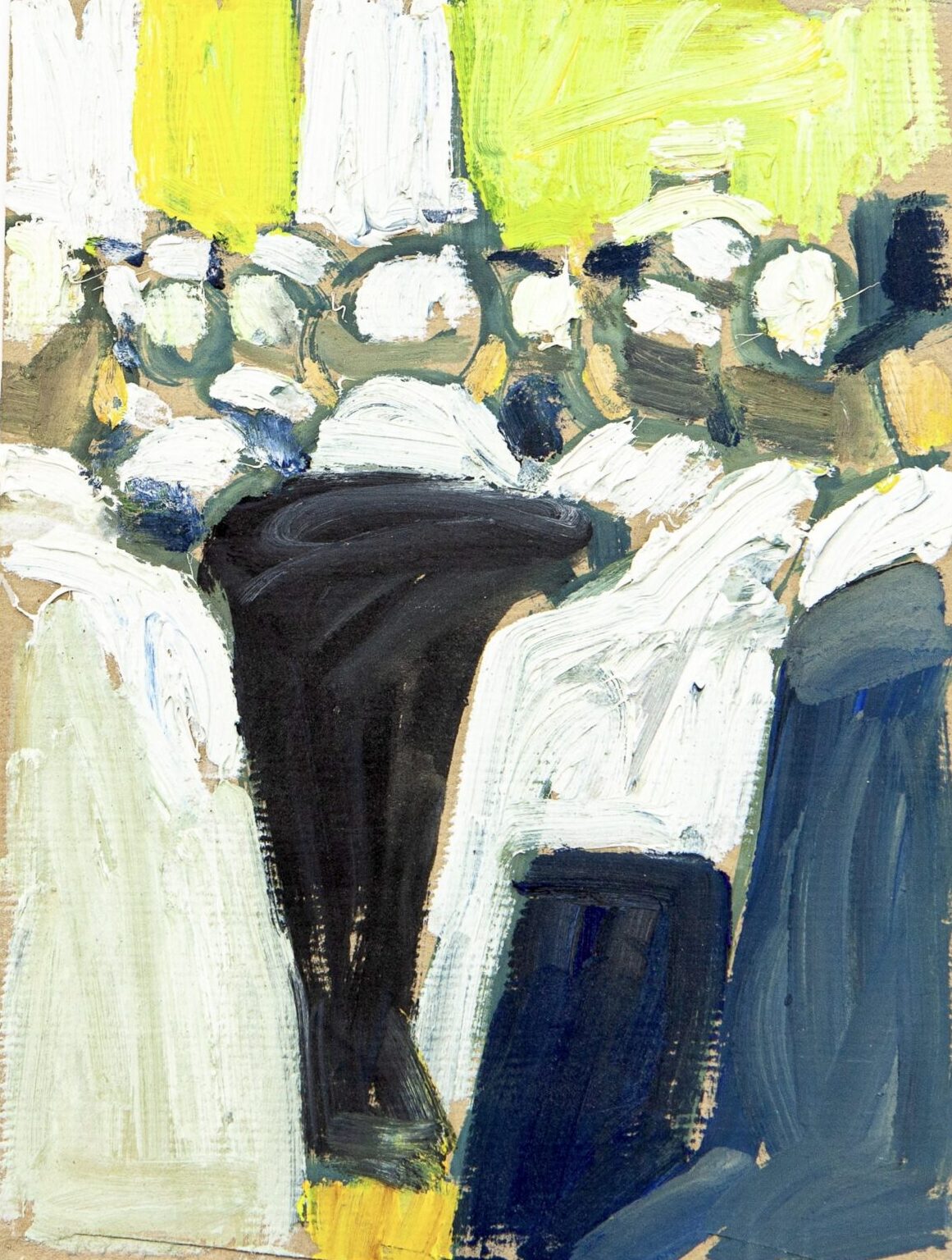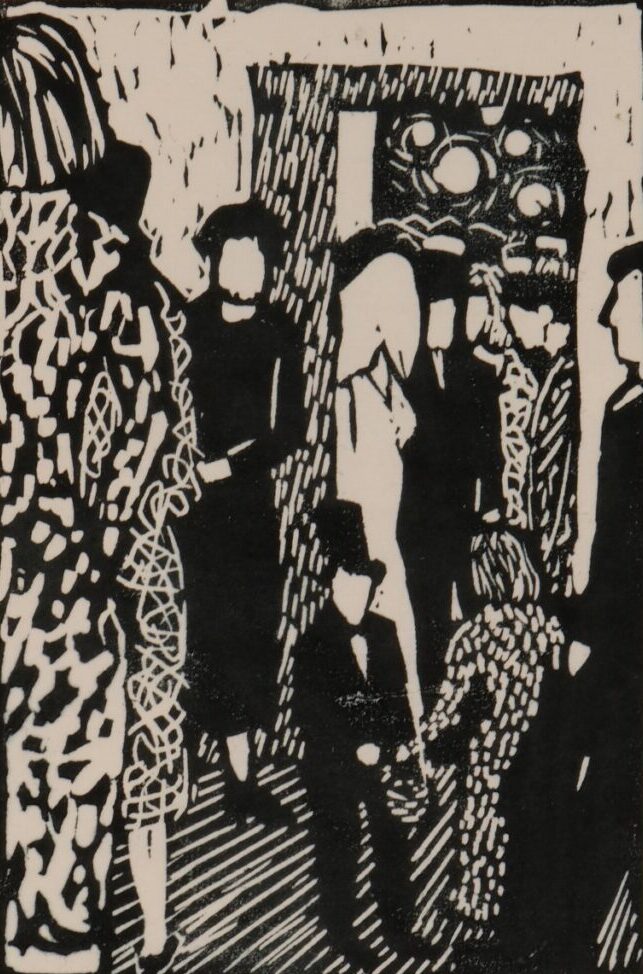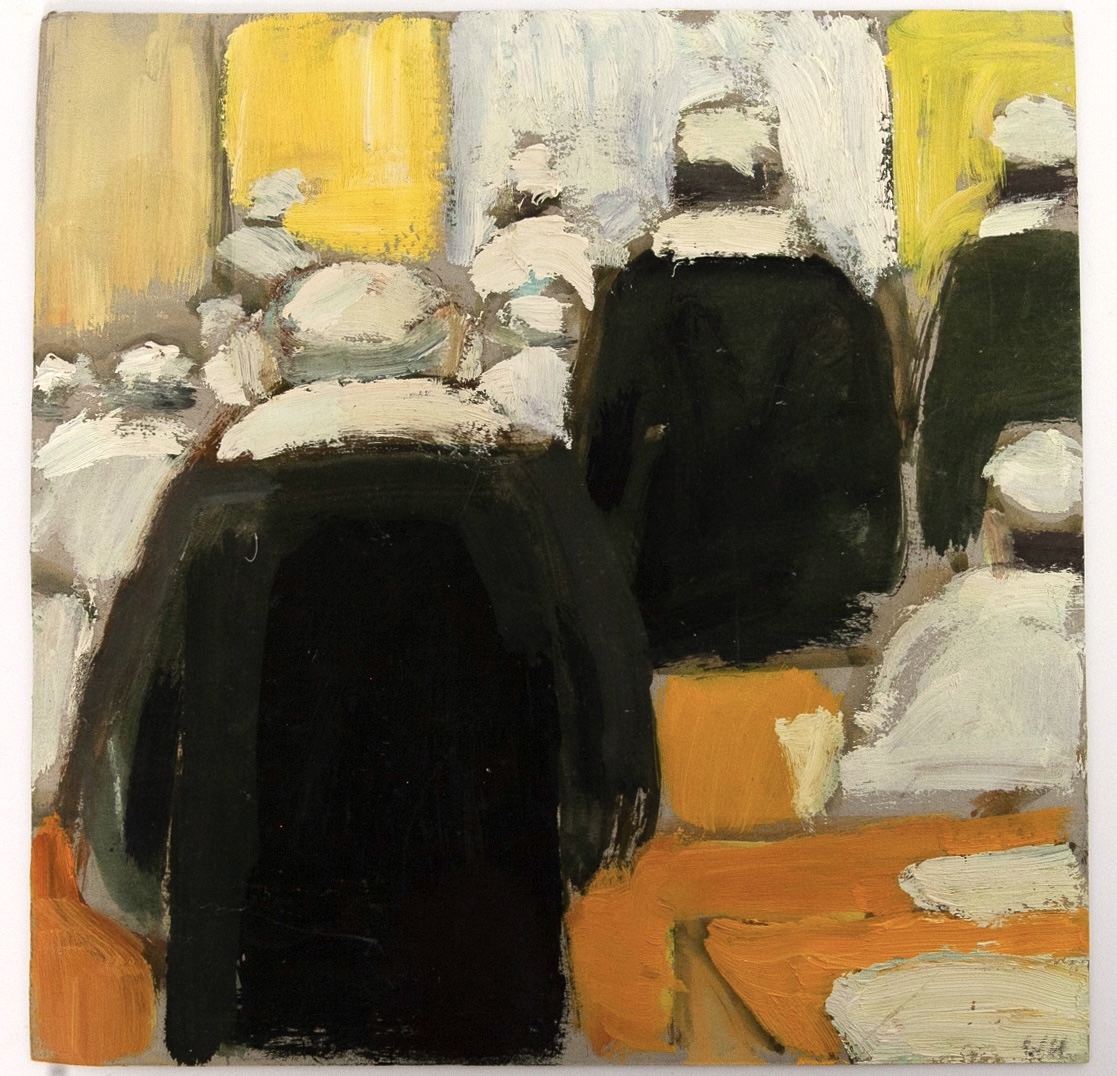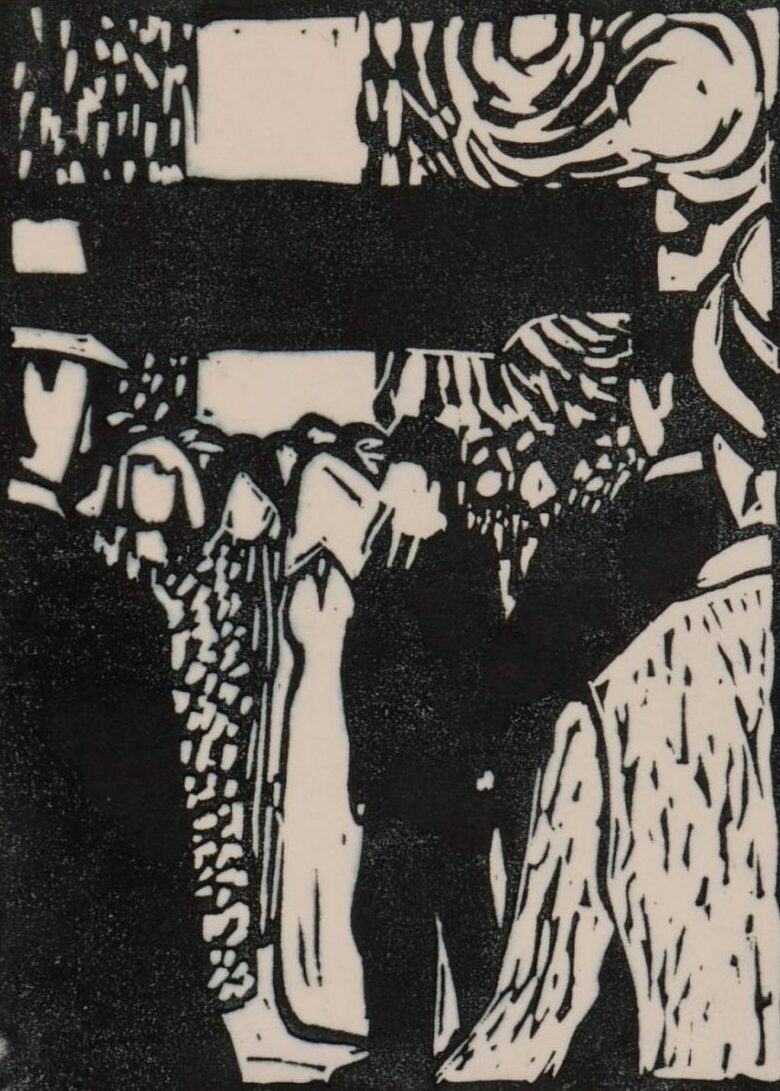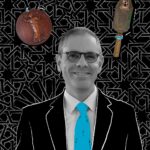Walter Haymann, No Title (Mn praying in the synagogue), ca. 1980, JMS 1856.1.
Walter Haymann, No Title (wedding), 1972, JMS 1776.4.
Walter Haymann, No Titel (Praying men), ca. 1980, JMS 1781.7.
Walter Haymann, No Title (Men praying in the synagogue), ca. 1980, JMS 1781.13.
Walter Haymann, No Title (wedding ceremony), ca. 1980, JMS 1776.1.
«A reserved man, an unwavering artist.»
Gisela Zürrer on the Artist Walter Haymann
The Zurich artist Walter Haymann (1926–2011) created an extensive body of landscapes, still lifes – and a series of impressions of the synagogue on Löwenstrasse. The Jewish œuvre shows the significance of religion for a man whose family witnessed pivotal events: the emancipation of Jews in Switzerland, the Shoah, the founding of the State of Israel, and the historical reckoning with the Nazi era. Museum director Naomi Lubrich spoke with Gisela Zürrer, president of the Walter Haymann-Foundation, about an artist who is posthumously being re-discovered.
Naomi Lubrich: Ms. Zürrer, Why is Walter Haymann, who was not well-known during his lifetime, now attracting new interest?
Gisela Zürrer: Walter Haymann was a reserved man. In his younger years, he associated with fellow artists, but he later lived a mostly private life. His paintings are rich in color, perhaps too pleasing for his time, which was inspired by the avant-garde. But Haymann remained unwavering in his artistic pursuits. At the age of 83, he wanted to secure his œuvre of more than 3000 painting. He sought advice from friends and experts, including Johannes Zürrer, his student and friend. In 2010, he founded a foundation with the purpose of gaining visibility for his work. That set a new dynamic in motion.
NL: What role does Judaism play in his art?
GZ: We own about a hundred images from the synagogue on Löwenstrasse, Zurich. But the Jewish series is only a small part of his work, which otherwise consists of landscapes and still lifes. The synagogue series is nevertheless artistically interesting: The style varies, the perspective is always the same. The viewers watch the service from the periphery, from behind or from the side. Haymann painted an whole cycle of his cousin Jacques Bollag’s wedding in 1972.
NL: What role did Judaism play in Haymann’s life?
GZ: Walter Haymann was not a practicing Jew, but he was interested in religion as philosophy. Judaism nevertheless informed his family history: Haymann’s mother’s known lineage goes back to the 18th century. Her grandfather, Simon Weil, gained citizenship even before the Jewish emancipation in 1866; her father Jakob Weil was Switzerland’s first Jewish lieutenant. But two generations later, Walter Haymann witnessed the rise of the Nazis. His family owned a large house and took in refugees, among them Haymann’s cousin Heinz Laufer from Munich. Heinz spent two years with the Haymanns before being expelled by the Zurich police. He was arrested at the border, deported, and murdered in Auschwitz. Haymann had grieved a painful loss already in childhood: His sister Trudi died at the age of 14 from the flu, while Haymann, who had also caught the flu, survived. Walter’s later wife, Irene, was a Holocaust survivor from Poland. They both dealt with a lot of grief – and survival.
NL: What other Jewish subjects did Walter Haymann take interest in?
GZ: Haymann liked to travel, among others to Israel. He painted the Old City of Jerusalem and a kibbutz landscape. Haymann also painted Jewish places in Switzerland, for instance the cemetery between Endingen and Lengnau. And he drew illustrations for Jewish scripture.
NL: What are your goals in securing Haymann’s legacy?
GZ: Starting in 2021, my colleagues at the Walter Haymann-Foundation and I began working on an online catalog, an index. We are studying Haymann’s family history and are planning exhibitions of his works, both of which are goals of the foundation. There’s a lot to do!
NL: Thank you very much, Mrs. Zürrer, for the work you are doing.
verfasst am 03.01.2024
Walter Haymann-Stiftung
